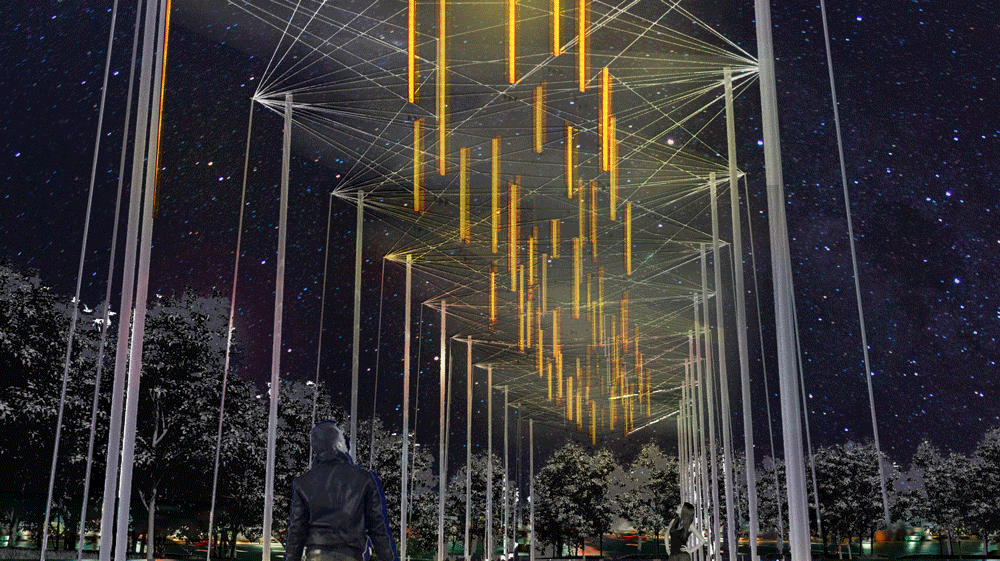AKI ISHIDA
Architect & Educator







AIR-BORNE
Air-borne is a park for pleasure and a memorial for meditation. The re-graded site is entirely open. Trees around the perimeter (except the east) and low walls create numerous seats with leafy shade and recall WWI’s ubiquitous trenches. On the east, the Pershing memorial is relocated to open toward Freedom Plaza, his binocular-gaze on Europe.
Inside the park-like threshold, a generous clearing opens to the sky. Visitors may pause and look up; suspended overhead is a filigreed wire and glass floating compression structure or ceiling; from French ceil for sky. Sounds from battlefields can be projected from the structure. In the evening, the glassy suspended objects project a play of colored light activated by pedestrian movement, integrating visitors with the memorial. The squad of supporting columns has nozzles periodically projecting a fine mist to envelop the ceiling with clouds under which people walk. It will be visible from across Freedom Plaza, making an inviting destination.
The plaza will have planted circular impressions to recall battlefield craters. The largest is a reflecting pool beneath the ceiling to see the sky even when looking down. Poems written during the war, like Hemingway’s Killed Paive, encircle the depressions.
Air-borne remembers the dedicated souls who passed away in war as well as recalls that this war was the first use of gas to weaponize the very air we all breathe. Air-borne honors individuals’ sacrifices while recalling the horrors of modern warfare as a reminder that Armistice was to be the end of all wars.
Team: Carolina Dayer, Paul Emmons, Linda Heinrich, Aki Ishida, Arezou Khalili, Hooman Koliji, and Yildirim Yazganarikan